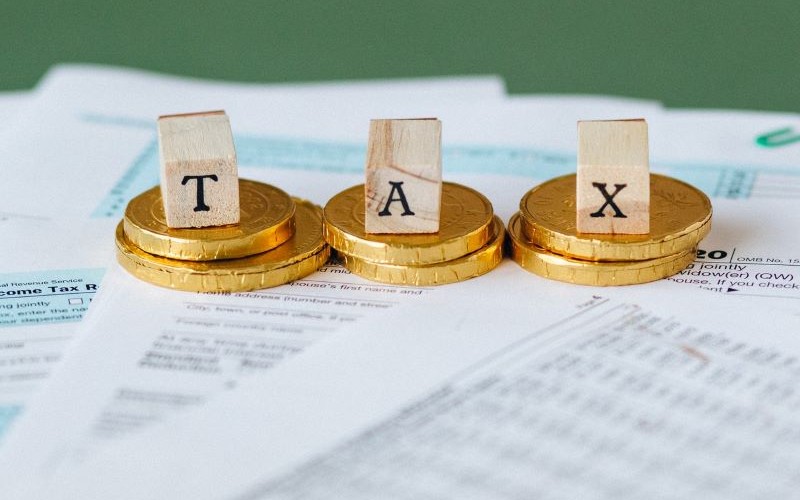The $18,200 tax-free income portion was more than tripled from $6,000 in 2012-13, and has remained that way since - despite tinkering of other tax brackets over that decade.
Arguably the biggest changes to personal income tax rates in about a decade are scheduled to arrive in 2024-25, but the no-tax threshold will remain at $18,200.
Someone earning $45,000 currently pays $5,092 in income tax annually, excluding the 2% Medicare levy and any tax offsets.
Raising the tax-free threshold to $25,000 would see them pay $3,800 - a saving of nearly $25 a week.
Mark Chapman, director of H&R Block's tax communications, said it's time for a bump to the tax-free threshold.
"The threshold has stayed static for a decade - the last increase was in 2012 - so it’s beyond time for a further increase," Mr Chapman told Savings.com.au.
Mr Chapman also said it would benefit the lowest income earners who missed on most of the low-middle-income tax offset, or LMITO.
"Any increase would benefit low-income earners who are suffering more than any other group from the current cost of living crisis. In short, more people would be taken out of the tax net completely – exactly how many would depend on what it was increased to," he said.
A few tax bracket tinkering scenarios using the ABS-defined average full-time income is in the chart below.
Note that the 'average' is pushed out by a select few very-high income earners; the median is about $78,000.
However with the advent of the LMITO, Dr Adrian 'Mr Taxman' Raftery said the $18,200 threshold is redundant.
"The difference between increasing the tax-free threshold versus have the tax offsets in place is merely the timing that people get their tax benefit," Dr Raftery told Savings.com.au.
"An increased tax-free threshold results in less tax progressively in each pay packet whilst the LITO and LMITO is a refund of tax paid when you lodge your return at year end as a lump sum."
Despite the potential tax savings to lower income earners, the Australian Council of Social Service (ACOSS) would not support an increase to the threshold.
ACOSS CEO Dr Cassandra Goldie said low-or-no-income earners need essential services and safety nets, not tax cuts.
"It would be a poorly targeted way to assist low-income wage-earners as it would provide another tax cut to taxpayers on higher incomes too," Dr Goldie told Savings.com.au.
"Instead of cutting taxes, which won’t help the 30% of households on the lowest incomes struggling to pay rent and feed their families, the government should restructure them so that revenue is raised more fairly and efficiently."
Tax offsets or a higher threshold?
A higher threshold could enable taxpayers to pocket the difference and put it in a savings account to earn compound interest over the year, while a year-end lump sum could alleviate bill pressures and allow some to wipe out debt.
Dr Raftery said the LMITO is better politics than a higher threshold.
"If you trickle in the tax benefit during the year with a higher tax-free threshold ... it will get absorbed as a part of life’s normal spending patterns, and the majority of people will miss out on the joy with the forced form of saving that a year-end refund can generate," Dr Raftery said.
"From my experience over the past 30 years of preparing tax returns, the tax offsets have been great as your clients think you are Santa Claus and the best accountant in the world for getting them a nice big refund.
"But more importantly, you get feedback from them saying 'Oh great - the refund can pay this or purchase that', and they are just happy.
"Although at the end of the year, the net result would be the same, I would prefer the tax offsets at year-end over an increased tax-free threshold."
Incoming tax hikes in disguise?
In last week's 2022-23 Federal Budget announcement, Treasurer Josh Frydenberg said the LMITO for the 2021-22 tax year would be up to $1,500 - an increase of $420 - but did not announce that it would be extended into 2022-23.
The LMITO had been in place since 2018-19.
This means those earning up to $126,000 could be worse off by up to $1,080 at the end of next financial year.
H&R Block's Mr Chapman previously said ending the LMITO was effectively a tax hike in disguise.
"Unfortunately, this is just a short-term measure ... it's hard to see how that will do anything to help cost of living pressures over the medium and long term," he said.
Dr Raftery echoed similar.
"Assuming there is no change in policy, we will see a lot of unhappy taxpayers in 15 months’ time when their refund in July 2023 is significantly lower than in July 2022," he said.
Australia's reliance on income tax
Despite tax cuts forming a large part of the Budget discourse over the past few years, tax as a proportion of GDP has been climbing steadily since 2011.
ABS figures show for 2019-20 it was 27.8%, up from 26% in 2011-12 - it peaked in these years in 2018-19 when it hit 28.7%.
Among OECD nations, Australia is also more reliant on income taxes to generate revenue than other countries.
The Organisation found as of 2019 Australia derived 42% of its taxation revenue from personal income taxes (including personal profits and gains) compared to 23% on the OECD average.
Dr Goldie said Australia should look to other taxation streams.
"High priority should be given to reforms to taxes on investment incomes from property and shares, superannuation, the use of private companies and trusts to avoid tax, curbs on tax avoidance by multi-national companies, and the removal of business tax concessions that are economically and environmentally harmful such as fossil fuel subsidies." - Dr Cassandra Goldie, ACOSS CEO.
Mining companies usually receive credits for the fuel excise as their fleets usually do not drive on public roads.
AMP Capital chief economist Dr Shane Oliver also said government spending in lieu of a hot economy comes with some risks.
"At some point tough decisions are likely to be required either to reduce spending as a share of GDP or raise taxes," Dr Oliver said.
What about age pensioners?
The age pension is also considered taxable income, and the maximum rate of $900.80 per fortnight for a single person falls over the threshold, meaning the government taxes its own welfare.
If working and still eligible for the full age pension of $23,420.80 per annum, a single age pensioner is taxed $992 per year.
However age pensioners whose retirement income is derived solely from the pension aren't taxed, and they aren't eligible for the LMITO anyway.
Pensioners earning more than $240 a week currently lose 50c on the dollar of their pension.
Seniors and age pensioners are also able to claim their own tax offset, called the SAPTO, which offsets up to $2,230 for singles.
National Seniors Australia chief advocate Ian Henschke said pensioners should be able to work more without seeing their payments cut.
"In Australia only 2.9% of age pensioners work compared to 24.8% in New Zealand, which allows older people to work regardless of whether they receive the pension or not," Mr Henschke said.
"If Australia had the same participation rate as New Zealand there’d be as many as 400,000 additional pensioners in the workforce.
"It’s a missed opportunity to solve workforce shortages, boost incomes and Australia’s GDP at a crucial time."
Advertisement
Need somewhere to store cash and earn interest? The table below features savings accounts with some of the highest interest rates on the market.

- Bonus variable rate for the first 4 months on balances up to $250k and high variable ongoing rates.
- No fees and no monthly requirements to earn interest.
- Easily open an account online in 3 minutes.
Photo by Nataliya Vaitkevich on Pexels






.jpg)

 Denise Raward
Denise Raward

 Harry O'Sullivan
Harry O'Sullivan
 Rachel Horan
Rachel Horan


